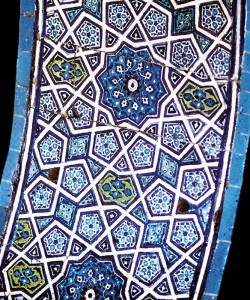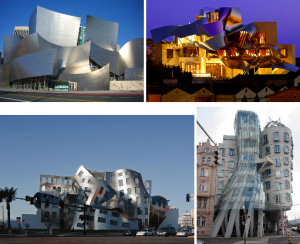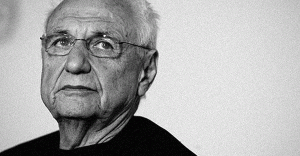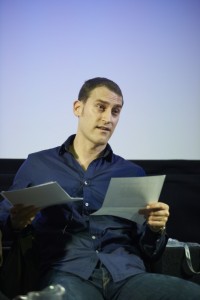During Eastanbul Westanbul (November 2013), Turkishceramics invited six architectural practices to Istanbul to research and discover the history and use of ceramics in Turkey. During the programme, Istanbul-based design, curator and writer, Gökhan Karakuş presented a lecture to the architects on the origins, historical context and contemporary use of ceramics.
To find out more about the insights of the lecture given by Gökhan Karakuş, please read his blog post, ‘Humane Geometries’ – part one of a three part blog series.
Please check back here in February for part 2!
Part 1
HUMANE GEOMETRIES
Blog by Gökhan Karakuş
 Architecture in eastern contexts has a distinct pedigree that while somewhat watered down in the vagaries of 21st century economic and urban transformation is still vibrant today in our modern world. While we can no longer convincingly speak of national architectures, there is still an interest in and practice of local architecture cultures that are tied to different notions of composition, form and materials. Starting with the early modernism of the 18th century there has been a slow adoption of the Western system of architecture and design in the rest of the globe including Eastern geographies. But interestingly despite this rapid pace of change the remnants of age old systems of construction and architecture are still with us today as possible inspirations for new ways of working
Architecture in eastern contexts has a distinct pedigree that while somewhat watered down in the vagaries of 21st century economic and urban transformation is still vibrant today in our modern world. While we can no longer convincingly speak of national architectures, there is still an interest in and practice of local architecture cultures that are tied to different notions of composition, form and materials. Starting with the early modernism of the 18th century there has been a slow adoption of the Western system of architecture and design in the rest of the globe including Eastern geographies. But interestingly despite this rapid pace of change the remnants of age old systems of construction and architecture are still with us today as possible inspirations for new ways of working
One of these eastern traditions is the history of the pattern-based approach to architectural decoration often with ceramics as the important aesthetic and material catalyst. Widespread in the Middle Ages in the Islamic world and Central Asia up into the modern period, geometric patterns were used to generate architectural decoration on the facades and vertical surfaces of buildings but were also central to design strategies that were a significant part of the compositional repertoire that was used to build up mass, volume and space. Abstract geometric patterns in two and three dimensions were utilized by architects or more correctly master builders from Istanbul to Samarkand to generate buildings that placed an importance on the practical and the metaphysical in epistemological and architectural concepts different from Western tradition. While the West and Europe was and is still today caught up in its origins in the Classicism of the Greco-Roman period with the classical orders at its center, the East and in particular Islamic architecture focused on a combination of mathematics, geometry, pattern and materials to create architecture. In this non-Western architectural traditional, geometric pattern in the form of non-periodic tilings pointing towards abstract notions of infinity generated a profound understanding of man and the universe in the underlying mathematics behind these designs.
It is here in the connection between composition and materials through the application of geometric pattern that we can turn today contemporary practice. While architecture in places like Turkey, Central Asia and the Islamic world is in our times dominated by the Late Modernism of European origin, there exists still in the traditions of construction and materials in the East ways to generate new architectures from a basis in the pattern based design possibilities of materials such as ceramic. Geometric patterns in surface materials and building units extending from the micro to the macro dimensions of building provide intriguing design strategies coordinated with present needs. For example, patterns are a simple way to relate human scale to the vast new urban scale that is growing rapidly in our cities. More so traditions in architecture based in geometric patterns enabled by todays computational design hints at the possibilities of a transformation to an architecture that is at once ancient and profound but thoroughly aligned to contemporary needs for builders and society alike.
 ABOUT GÖKHAN KARAKUŞ
ABOUT GÖKHAN KARAKUŞ
Gökhan Karakuş is an Istanbul-based designer, curator and writer. He is the founder and director of Emedya Design, an interactive and environmental design studio creating a range of projects including wayfinding, exhibitions and publications. As a writer he is the editor of the stone architecture magazine, Natura, and a regular contributor to leading global architecture publications such as Detail, The Architect’s Journal, Architectural Record, Dwell and Bauwelt. He is also a curator of many important exhibitions on architecture and design including the recent exhibition, The Performance of Modernity: Atatürk Kültür Merkezi, 1946-1977, on Turkey’s modern opera house at Salt Galata in Istanbul.
He is a noted lecturer on topics such as architecture in non-Western contexts, design and craft.
Twitter: @gokhankarakus





